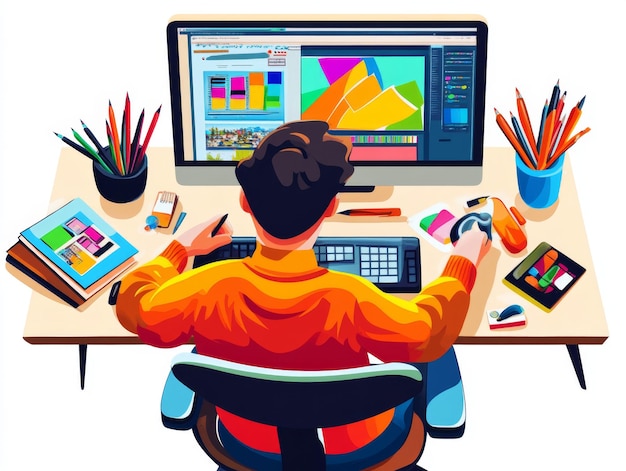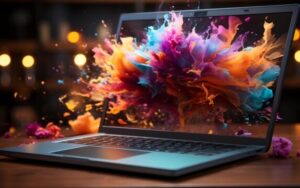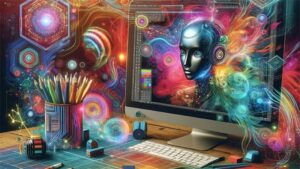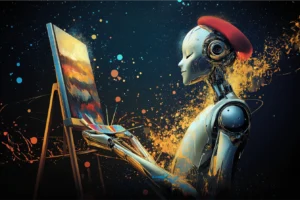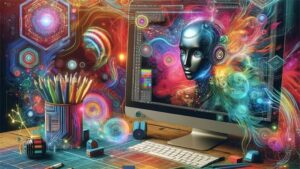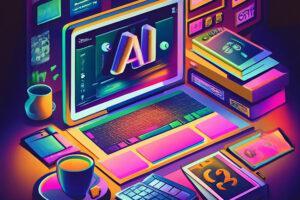The world of animation is undergoing a significant transformation with the integration of AI technology. The use of AI in animation is not only enhancing the creative process but also making it more efficient and accessible. As digital creators explore new frontiers, the role of AI is becoming increasingly prominent, offering tools that revolutionize how animations are conceived and produced.

What is AI in Animation?
At its core, AI in animation refers to the application of artificial intelligence technologies to create or assist in the creation of animated content. This can include everything from character design to motion capture, and even the final rendering of an animated scene. AI algorithms can analyze data, recognize patterns, and make decisions that help streamline the animation process.
Historical Overview
The journey of animation began long before AI was a part of the picture. Traditional animation required painstaking, frame-by-frame drawing, which was both time-consuming and labor-intensive. With the advent of computer animation, animators were able to automate certain processes, but it wasn’t until the last decade that AI started to play a significant role in the industry.
The Rise of Computer Animation
In the late 20th century, computer-generated imagery (CGI) became a game-changer for animators. Films like ‘Toy Story’ demonstrated the potential of digital animation, setting the stage for further technological advancements. However, even with CGI, creating animations still required a substantial amount of manual input.
Introduction of AI
Recent advancements in AI have enhanced the capabilities of digital animation. AI tools can now automate tasks such as in-betweening, which fills in the frames between key animations, and lip-syncing, which aligns character lip movements with dialogue. This has significantly reduced the workload for animators and allowed for more creative freedom.
Benefits of Using AI in Animation
Efficiency and Speed
One of the most significant benefits of AI in animation is the increase in efficiency and speed. By automating repetitive tasks, AI allows animators to focus on the creative aspects of their work. This not only speeds up production times but also reduces costs.
Enhanced Creativity
With AI handling the more monotonous aspects of animation, creators have more time to experiment and innovate. AI tools can also suggest new creative directions, offering a fresh perspective that can inspire animators to push the boundaries of their work.
Accessibility
AI technology is making animation more accessible to a broader range of creators. With AI-driven tools, even those with limited technical skills can produce high-quality animations. This democratization of animation is opening up the field to diverse voices and stories.
How AI is Used in Animation Today
Character Design
AI algorithms can analyze thousands of character designs to create new, unique characters quickly. This process involves using machine learning to understand what makes a character visually appealing and then generating new designs based on these patterns.
Motion Capture and Animation
Motion capture, or mo-cap, is a technique where actors’ movements are recorded and then translated into animated characters. AI enhances this process by automatically refining the captured data, making it more accurate and lifelike. This is particularly useful in creating realistic human and animal movements.
Scene Generation
AI can generate entire scenes by understanding the context and style of an animation. This includes setting the background, lighting, and even adding secondary characters or objects, all while maintaining the artistic style desired by the animator.
The Role of Neural Networks
Neural networks play a crucial role in the application of AI in animation. These networks, modeled after the human brain, are capable of learning and adapting. In animation, neural networks are used for tasks such as image recognition, style transfer, and procedural generation.
Challenges and Ethical Considerations
Quality Control
While AI can automate many tasks, maintaining quality control is essential. Animators must ensure that the AI-generated content meets the desired artistic standards and aligns with the creative vision.
Ethical Use
The use of AI in animation also raises ethical questions, particularly regarding job displacement and creative ownership. As AI tools become more prevalent, it’s crucial to consider how they impact jobs and the creative process.
The Future of AI in Animation
The future of AI in animation looks promising, with advancements in AI technology continuing to evolve. Emerging tools are expected to offer even greater creative possibilities and efficiencies, transforming the animation industry in ways we can only imagine.
Predictions and Trends
Experts predict that AI will lead to more personalized and interactive animations, where viewers can influence storylines and character development. This interactivity could revolutionize not only animation but also gaming and virtual reality experiences.
Collaborations and Innovations
As AI technology advances, collaborations between technology companies and animation studios are likely to increase. These partnerships will drive innovation and lead to the development of cutting-edge tools that further enhance the animation process.
Conclusion
The integration of AI in animation is transforming the creative landscape. By enhancing efficiency, creativity, and accessibility, AI is enabling animators to push the boundaries of what is possible. As technology continues to evolve, the possibilities for AI in animation are limitless, offering exciting opportunities for digital creators around the world.

FAQs
What is AI in animation?
AI in animation refers to the use of artificial intelligence technologies to assist in the creation and production of animated content, enhancing efficiency and creativity.
How does AI benefit animators?
AI benefits animators by automating repetitive tasks, increasing efficiency and speed, and offering new creative possibilities, allowing animators to focus on innovation.
What are the ethical concerns with AI in animation?
Ethical concerns include potential job displacement and questions about creative ownership, as well as ensuring AI-generated content meets quality and artistic standards.
For more insights into AI in design, visit AI for Responsive Design, Role of Neural Networks, and AI for 3D Modeling. Additionally, explore the broader implications of AI in creative fields by reading this article about AI’s impact on graphic design.

